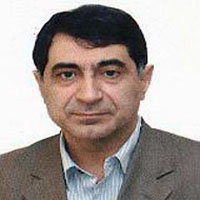The effect of intensity of interval training on expression of cordial myostatin and follistatin proteins in rats with myocardial infarction
Cardiovascular disease (CVD) is one of the leading causes of death worldwide. CVD covers a wide range of diseases, including arrhythmias, idiopathic cardiomyopathy, heart failure, and atherosclerosis. These diseases can lead to potentially fatal heart events such as stroke, myocardial infarction (MI), or cardiac arrest. MI is associated with decreased oxygen delivery to the heart muscle, a process that leads to myocardial cell death, and inflammatory response. Many changes occur in the cardiovascular system due to MI. One of the things that researchers are studying to learn more about is changes in cardiac cytokines. Cardiac cytokines secreted by the heart muscle are called "cardiokines", which play an important role in homeostasis, function, response to myocardial damage, and myostatin and follistatin are two important cardiokines. Myostatin, also known as GDF8, is a member of the beta-transforming growth factor (TGF-β) family, whose most important function is to inhibit muscle growth. Fulostatin-1 (Fstl1), also known as TSC-36, is a glycoprotein that is a member of the follcostatin family. At the heart, Fstl1 is known as a cardiokine. Circulating levels of follcostatin increase due to heart failure. Overexpression of follistatin has been shown to have protective effects following heart damage such as myocardial infarction. Overexpression of follistatin reduces the area of myocardial infarction and apoptosis. On the other hand, exercise is one of the most important factors affecting inflammatory and anti-inflammatory cytokines, which have multiple effects in patients with MI. Today, special attention is paid to the role of sports activities as a physiological stimulus. Different sports activities come with a wide variety of responses and adaptations. The beneficial effects of sports activities have been documented in various studies; Especially in people with heart disease and MI, it increases maximal oxygen consumption, reduces inflammatory parameters, quality of life, and reduces heart disease-related disorders. In summary, an exercise in animal and human subjects - both after myocardial infarction - leads to improved cardiovascular function. In general, studies of exercise activity in the field of cardiac tissue change and the formation of new cardiomyocytes by MI have not reached a single result, but some studies have shown that cardiac tissue changes and its function have a high positive correlation with Intensity and duration of sports activities. On the other hand, according to the above, it can be said that myostatin and follistatin as the most important cardiokines have a significant role in regulating tissue homeostasis and heart muscle function, but a study in the extensive-expression of cardiac myostatin and follistatin protein in MI-affected species has not been studied in response to different intensities of exercise. Therefore, this study aimed to answer the question: Do different intensities of intermittent exercise affect the expression of cardiac myostatin and folate statins in rats with MI?
The present study with the code RHC.AC.IR.REC.1393.28 was approved by the ethics committee of Shahid Rajaei Cardiovascular Training, Research, and Treatment Center. In terms of purpose, it is fundamental-applied, which was implemented experimentally, and based on the degree of supervision and degree of control, is a type of laboratory research. In the present study, 55 10-week-old male Wistar rats weighing 250 to 300 g were purchased from the Pasteur Institute of Iran. Attempts were made to maintain and work with animals by the recommendations of the Laboratory Animal Protection Act (NIH). For this purpose, wistar rats were taken under surgery of closing LAD coronary artery coronary and then it was approved by MI echocardiography. Four weeks after surgery, the rats with MI were randomly divided to the following interval training groups: low-intensity training, moderate intensity training, high intensity training, no-exercise myocardial infarction (MI-SED) and Sham. They performed exercise protocols for six weeks and five sessions per week. The obtained data was analyzed using ANOVA one-way and Bonferoni tests.
The results showed that in training groups, values of EF and FS were significantly increased compared to MI-SED group, but their values were significantly lower than Sham group. In addition, value of follastatin protein in training groups was significantly increased compared to MI-SED group. On the other hand, value of myostatin protein in training groups was significantly decreased compared to MI-SED group. It was also observed that by increasing intensity of intermittent training, values of all variables were changed positively.
The results of the present study showed that in general, exercise improves cardiac function in rats with MI, and probably one of the main mechanisms of this improvement in cardiac function is rooted in changes in the factors that regulate heart muscle growth. As a result, it can be said that intermittent training, regardless of its intensity, increases heart performance of rats with MI; but it seems increasing intensity of intermittent training has a more pronounced effect on amounts of follastatin and myostatin proteins in heart tissue of rats with MI.
- حق عضویت دریافتی صرف حمایت از نشریات عضو و نگهداری، تکمیل و توسعه مگیران میشود.
- پرداخت حق اشتراک و دانلود مقالات اجازه بازنشر آن در سایر رسانههای چاپی و دیجیتال را به کاربر نمیدهد.




